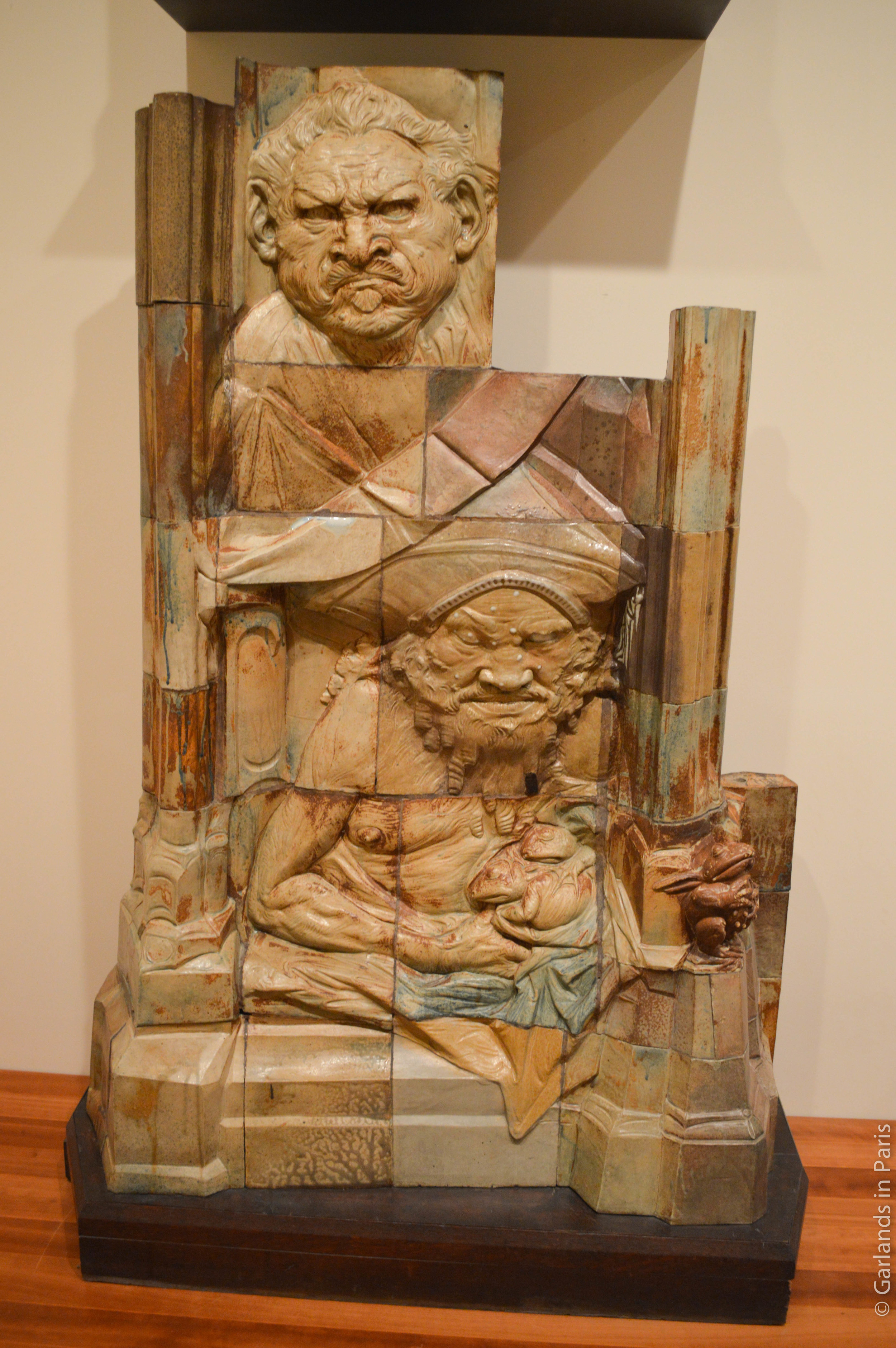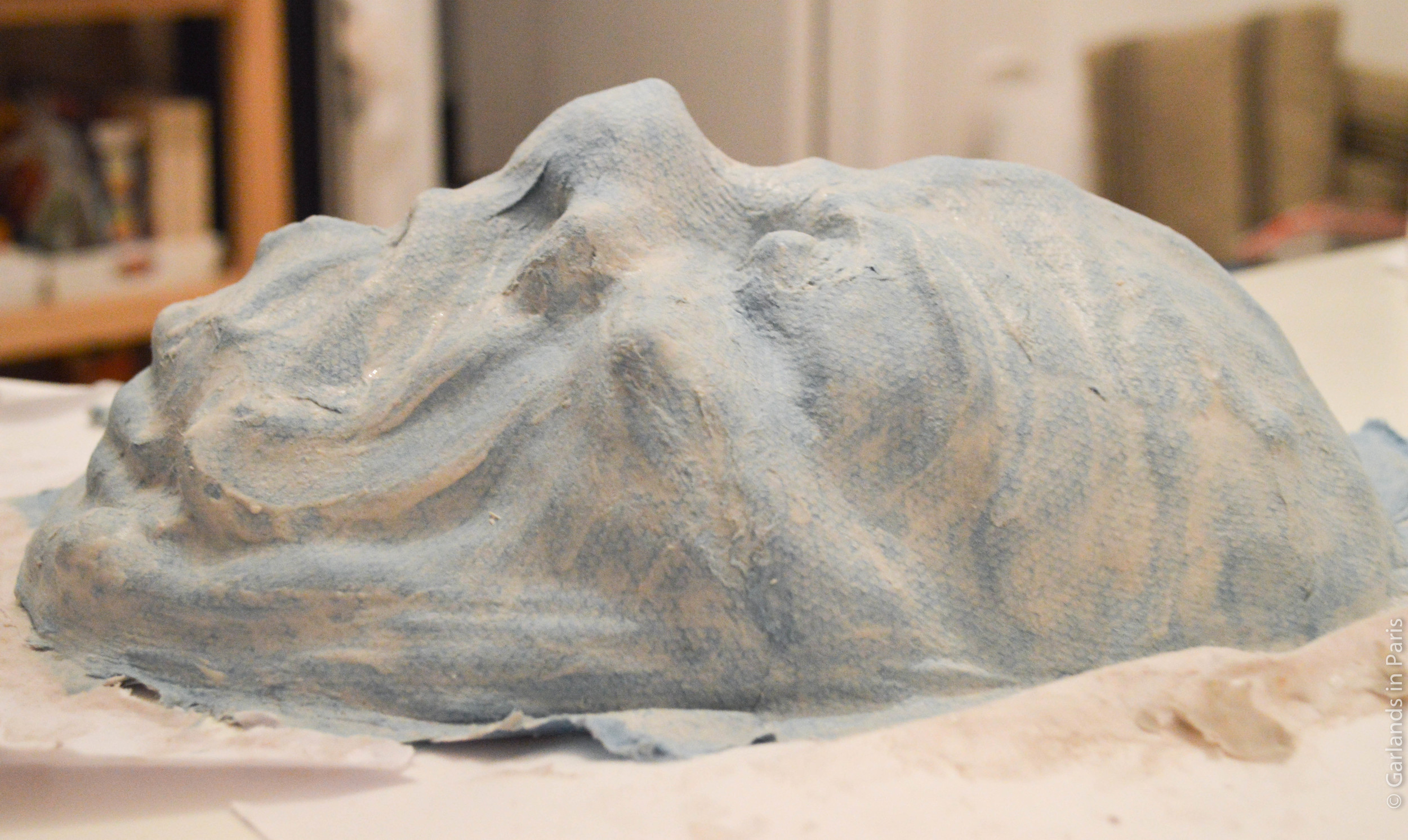Make a Carriès Mask
/This is part of Make a Mask, a series where I make copies of masks in Parisian museums.
This Halloween, I made my first papier-mâché mask. It was such an enjoyable process; a mix of sculpture, paper work and painting. Since then, every time I visit a museum, I am drawn magnetically to any and all masks on display.
Naturally, the next step was to start copying them.
For my first installment of this series, I submit to you Jean-Joseph Carriès's deliciously grotesque Horror Masks.
Jean-Joseph Carriès and his Horror Masks
Jean-Joseph Carriès (1855-1894) had a very distinctive style. Inspired by Gothic sculpture and Japanese art, this French sculptor and ceramicist's artworks are populated with strange monsters and grotesque visages.
After visiting the room dedicated to Carriès in the Petit Palais, I was hooked.
His Horror Masks, from around 1890, had several inspirations:
- Japanese art, with its Noh Theatre masks and portraits of actors
- The grotesque medieval figures that adorned manuscripts and cathedrals
- Sculptors interested in physiognomy who studied both human facial grimaces and their analogies with the animal kingdom; Carriès liked to combine human and animal features in his faces
-From the Musée d'Orsay's website
While Carriès used glazed stoneware inspired by the Japanese stoneware he had seen at the Exposition Universelle de Paris in 1878 for his Horror Masks, I decided to use the tried and true papier-mâché method for my reproduction. I would focus on copying the stylistic elements of the mask, rather than the technique.
The act of copying the Carriès mask helped me see it so much more clearly! From the sculpting to the painting, each step of the project revealed a new aspect of the mask to me.
Step 1: Clay
I used a cheap plastic mask as my base to work on with the clay. This turned out to be a mistake because it delimited the facial features, which was not very condusive to the distortions of the Horror Mask's face. For example, in order to achieve the scrunched up nose which goes right up to the eyes, I had to make an enormous snout on my mask.
Comparing my creation to that of Carriès helped me notice aspects of his mask that had been invisible to me before:
- The face is very round at the temples;
- The mouth is extremely lopsided;
- His mask melts to the left and has several rolls of skin under the chin;
- The eyes bulge forward and pupils are visible;
- The nostrils are ridiculously wide. I couldn't get my nose to flare in the same manner...
I smoothed out the clay with olive oil, following that up with a layer of vaseline (to faciliate the removing of the mask from the clay later on).
But as I compared this smooth surface to Carriès's mask, I realized that I needed to add deep lines to highlight the facial features, like around the swirly eyebrows. I made exaggerated lines that would be visible when the paper covered them.
I also hadn't noticed the warts that dotted the orange mask (I may have gone a bit overboard on that front).
Step 2: Papier-mâché
I followed the recipe for paste from How to Make Masks! by Jonni Good. This time, I worked with Scott Shop Towels like she recommends, rather than regular paper towels like for my last mask. The experience of working with the strong shop towels was such an improvement!
Many of the details were lost in this part of the process, but hints of the extra lines I added were still visible in the paper layer.
Step 3: Paint
Carriès liked to play with colors; he was fascinated by "the coloured effects that could be achieved by varying the clay, glazes and firing used for stoneware" (from the Orsay website). This proved to be a fun challenge to replicate that with acrylic paints!
After covering the mask in white gesso, I gave everything but the warts and eyes a covering of brown-ish yellow with orange highlights. I then painted the eyes a clear blue.
And then, the glaze! I mixed acrylic glazing liquid with brown paint and scrubbed the resulting mixture all over the mask.
When I wiped it off, this was the result:
When I look at my mask, I see all the ways it does not match the Carriès original. But on the whole, I'm pleased with it and I very much enjoyed the process. And I will never look at Carriès's work in the same way!
Up next: a mask from the Louvre
Petit Palais (salle 19)
Address: Avenue Winston Churchill 75008 Paris ∣ Métro: Champs-Elysées Clémenceau (line 1 or 13) ∣ Opening hours: Tuesday to Sunday from 10am to 6pm





































